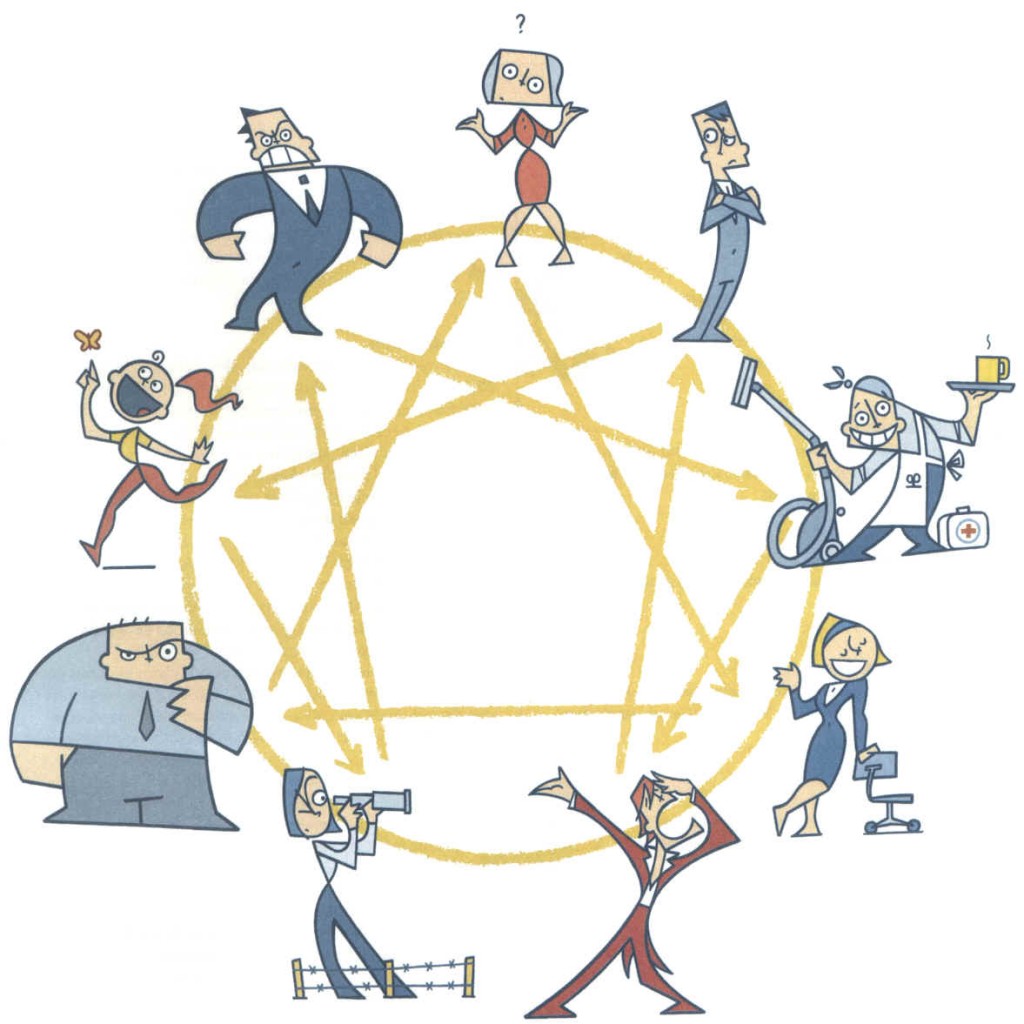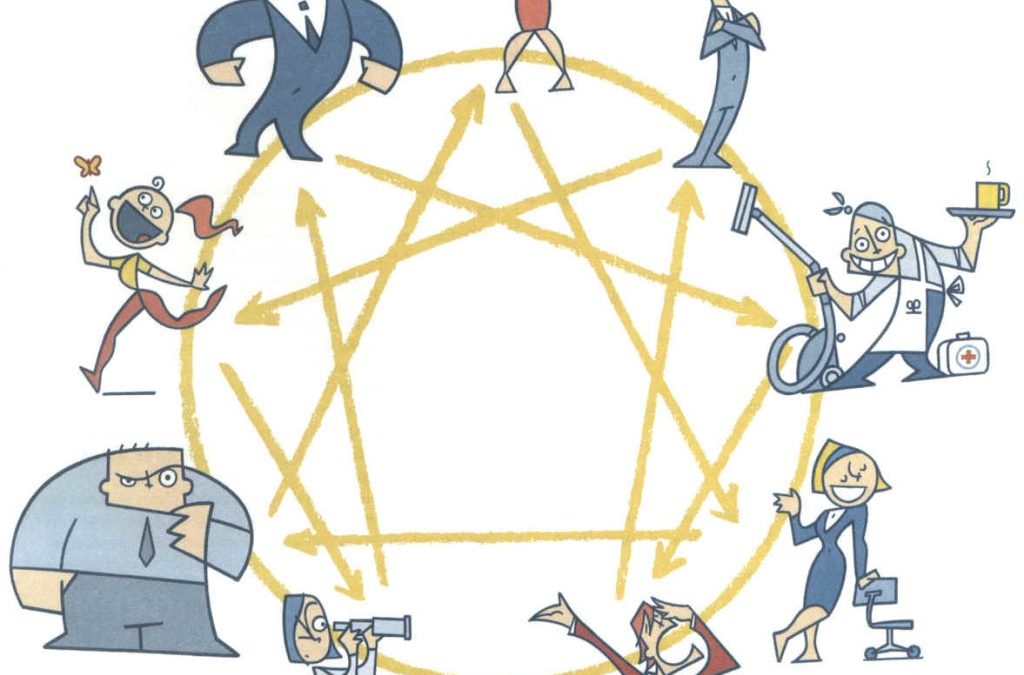If you have never come across this business tool before, you might be asking what exactly the Enneagram is. Most simplistically the Enneagram is a 9-point system, which can be used to analyse the spectrum of personality types that could exist inside your business or amongst your consumers.
 Why would this be a tool useful for understanding how to manage diversity inside your business you might wonder? If you can access a system to accurately understand and therefore empathise with how people think, feel and behave; and very importantly, if you can accurately understand why certain things get you excited and make sense to you, while other things drive you crazy, then perhaps you can
Why would this be a tool useful for understanding how to manage diversity inside your business you might wonder? If you can access a system to accurately understand and therefore empathise with how people think, feel and behave; and very importantly, if you can accurately understand why certain things get you excited and make sense to you, while other things drive you crazy, then perhaps you can
- build effective relationships with others
- have positive influence over others
- manage yourself more effectively because you can be more aware of your thoughts, feelings and behaviour
We are living in an exciting moment in history. A time where, unprecedented in social history, we are undergoing enormous, exponential and rapid change. This is stimulating, but it is not met without its challenges, which is why more and more businesses are seeking answers to questions that have never been asked before and are looking for solutions to problems that they have not come up against in the past. In many ways businesses across all industries have to carve out a ‘new way’.
In almost all industries, productivity gains and advancements that can be made through changes in structure, policy, strategy, supply chain management, recruitment styles, use of technology and other systematic rethinking have (for the most part) been made. So, what is left is a focus on people with the objective of ultimately making them as productive as they can be. This is, of course, tricky, because people are people. We don’t understand them because they never seem to stay the same and of course ‘no-one else seems normal like me’ as my colleague Dr. Graeme Codrington often says in our world famous presentation ‘Mind The Gap’, which talks about different generations. People come with a potentially cumbersome challenge called their ‘worldview’ based on their lenses (or the windows through which they see the world). Depending on what they deem important, the people that work in your business, the people who support your business (your consumers), and the people who make the decisions for your business each have a belief system, which they might not even realize they have, making it virtually impossible for us to really understand them unless they and we become aware of it and then talk about it.
If you are questioning what exactly I mean by a lens, window or worldview, here is a brief explanation. Essentially our windows are the frames through which we see things as normal or what works for us. This could influence anything, for example
- how we communicate (and through which technological mediums)
- when we like to work because of when we are most productive
- who we choose to hang out with at the office or in our spare time
- how we learn
- what, where and how we buy
- how we sell
- how we present information whether to individuals or a group
- how and with whom we network
- how we manage: ourselves, others, time and conflict
- how we connect with others
- what would attract and retain us
- how we build and sustain relationships
Many of our lenses are constructed by our life experiences, but they are also contributed to by a myriad of social, economic, psychological, emotional, physiological and intellectual variables like our age or generation (conditioned by the era in which we were born), our gender, culture, sexual orientation, race, ethnicity, education, socio-economic position and very importantly our personality type. When dealing with questions around diversity and transformation inside the workplace, we could interrogate any one of these variables as a contributing factor for diversity being a problem; and our personality type is often overlooked. Historically, we have been acutely aware of race, gender and generational differences, for example, as being potential social dividers, which is why it is often easy to ‘blame’ these things but increasingly there must be an awareness that our personality type can explain a lot when trying to understand why we could battle to work effectively with people and there are ‘relationship breakdowns’ or ‘communication misunderstandings’, which as we know is the primary reason why people leave their place of work, or worse, cease to be a productive contributor to their business.
The very important concept when dealing with diversity is awareness. When I am talking to clients about dealing with diversity and transformation, I always start with a conversation around awareness. How aware (or conscious) are the people, in your business, of their lenses and which lenses in particular are they are emotionally attached to? How aware are the people in your business of what their natural talents and strengths are? Getting the right people in the right place with the right talents at the right time is paramount to building and sustaining a successful business.
Understanding our personality type is all about creating awareness of self. In terms of a personality type, any one of us may not be aware that we judge and criticize everything that people in our teams do, because we are not aware that our default is to see what’s wrong before we see what’s right. Any one of us may not be aware that we are so busy caring for everybody’s needs in the team that you yourself feel depleted and possibly even resentful. Any one of us may not be aware that we are really frustrating to work with because we are so easily distracted by new ideas or even that members of our team feel that they cannot approach because we are so scary. Any one of us may not be aware that all of these different qualities (the ability to spot the error, the ability to care for other’s needs, the ability to generate new ideas easily and the ability to take charge) can be used to benefit the business and yourself if they are used when appropriate because they are natural strengths being used consciously.
The Enneagram is the most profound and accurate tool that I know of to assist any one of us to raise our self-awareness. It is therefore the most simple and fastest way we can self-develop, expand our worldview and grow our emotional intelligence in order to self-manage, which is the start to dealing with diversity. Why and how is this possible you might be thinking? Because if I am aware of who I am and how I am different to you; and if I can divorce myself from the emotional attachment of using that difference as a protective measure to set up social divides between us, then we can be different for one another and not from one another, to paraphrase a quote from Professor Nick Barker. When we get this right, we can use diversity to our benefit for innovation and productivity as well as building resilient relationships. Henri Tajfal, a French psychologist and identity theorist, talks about in-group social identity bias as being the reason for ‘diversity and difference being a challenge inside systems’. Tajfal argues that it is our emotional attachment to the bias we have towards people similar to us that stimulates social identity groups. So, it is not our prejudice against others, it’s our bias towards that which is familiar to us that sets up ‘other’. An obvious one in the workplace today is ‘young versus old’. Anyone over 48 is old and therefore won’t understand. How do you really know that’s true? ‘Education sets you apart’ is another social identity group divider: those with experience versus those with the qualifications, my qualification is modern and up to date versus my experience that is valuable because it’s practical and applicable even though my methods might be out-dated. ‘Men are from Mars and Women are from Venus’. All these notions are stereotypical generalizations, which may or may not carry weight in certain contexts but are far too simplistic in terms of understanding diversity and certainly offer no solutions to harnessing difference for the benefit of the business or the individuals in it. Due to the fact that our personality type is more subtle (because our motivations are often unconscious or a ‘blind spot’) we tend to blame the obvious difference noted above that we think are the cause of the relationship problem, rather than what is most likely causing the clash.
Perhaps if we could understand more accurately that if I find somebody difficult to work with because they seem pessimistic it’s not because they are 20 years older than me, it’s because that they are just really good at thinking through the worst case scenario and therefore can easily express their skepticism. If I know this about that person, then I can offer them clarity and comfort for whatever it is that causing their skepticism and therefore not only avoid a problem between us but actually learn to see how our difference can help us, because perhaps a healthy dose of skepticism was exactly what was needed, provided it’s been given consciously and because it’s appropria
If you would like more information on how you can use the Enneagram to maximize the benefits of difference inside your business or within your teams, please contact [email protected]


